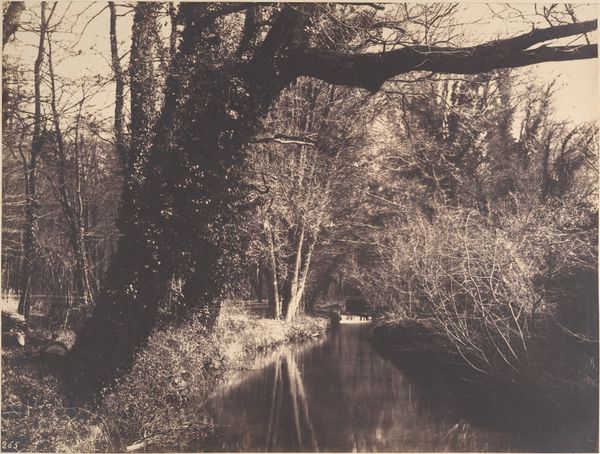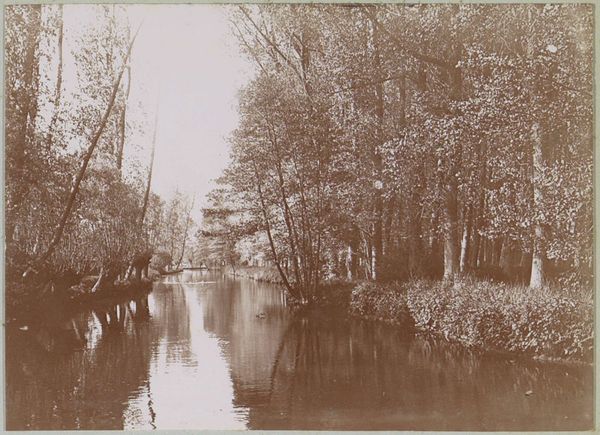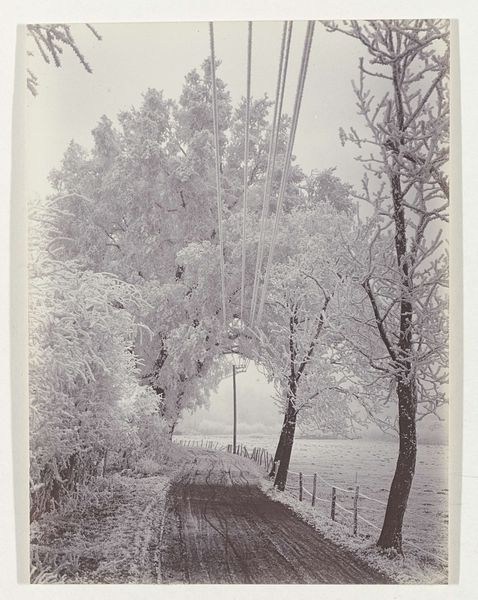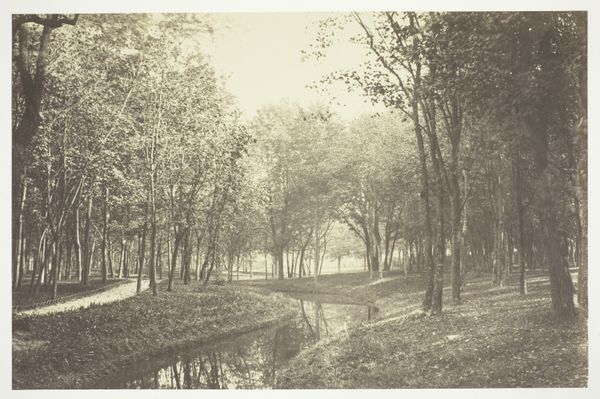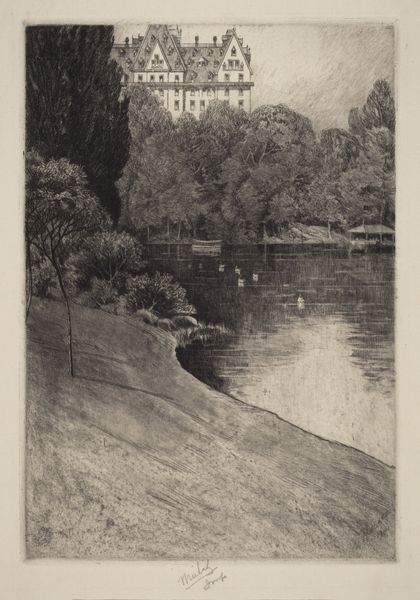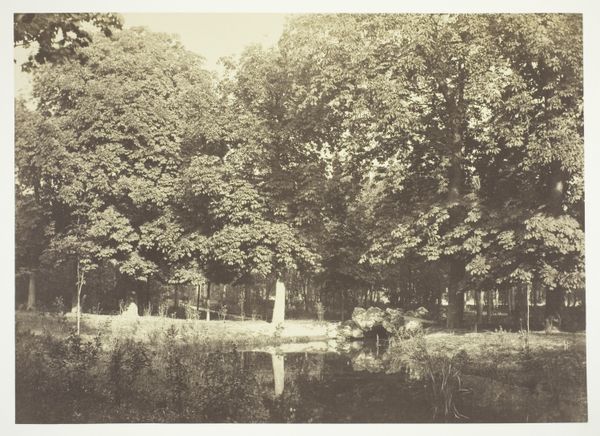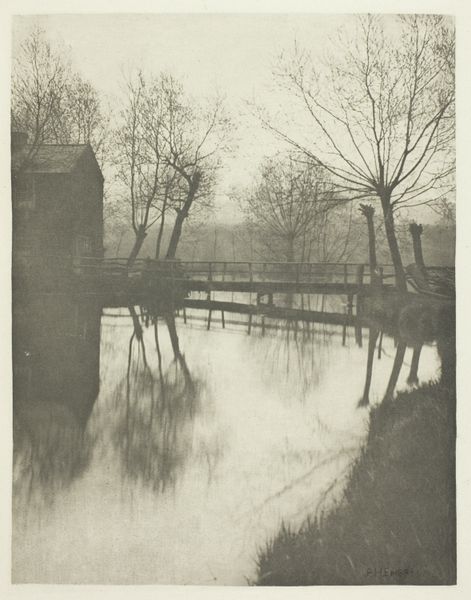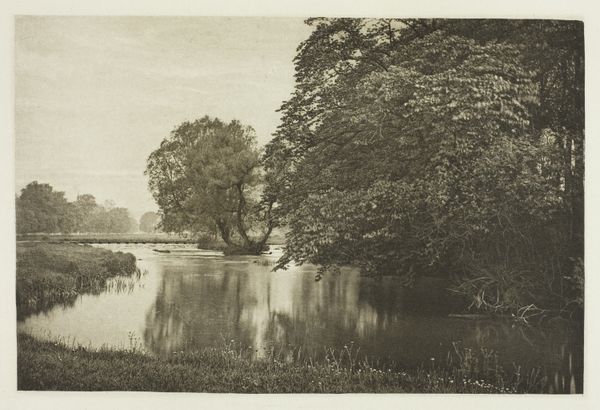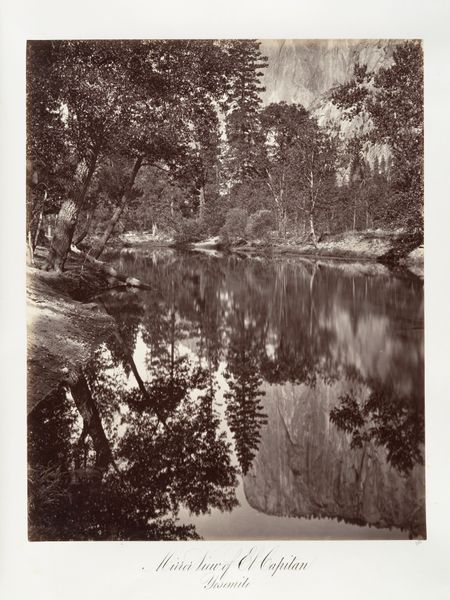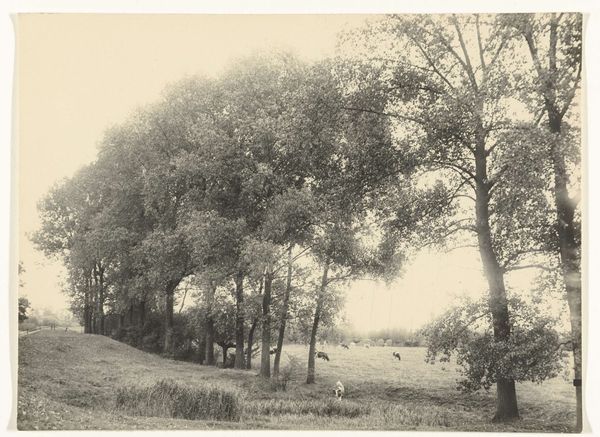
Dimensions: 21.3 × 16.8 cm (image/paper); 44.7 × 33 cm (mount)
Copyright: Public Domain
Editor: Here we have Alfred Rosling's "On the Mole," a gelatin silver print taken around 1856, currently housed at the Art Institute of Chicago. The cool tones give it quite a somber feel, but I'm also drawn to the sharp details in the foliage. What can you tell me about this work? Curator: I'm fascinated by the production of this image. The labor involved in creating a photograph at this time was substantial. Think about the preparation of the collodion plates, the darkroom tents… this was a truly hands-on, material process, unlike our digital photography today. How do you think that affects our interpretation? Editor: That’s interesting; it makes it feel almost like a craft, far removed from the instant gratification of modern photography. It feels like there’s an emphasis on the physical landscape, given how laborious it was to capture. Curator: Precisely. This period also witnessed burgeoning industrialization and increased consumption. This idyllic scene is carefully constructed through alfred Rosling's choices around location, subjects and technical treatment. Do you notice a possible dialogue about humankind and landscape? How does this play into Romantic notions of the sublime versus the encroaching realities of industry and societal structures of control and privilege at that time? Editor: Well, it does depict men relaxing by the water, enjoying nature, juxtaposed with evidence of human activity: a bridge over the water and a cleared bank, a scene shaped by both the natural landscape and human interaction, in tension and dialogue… almost highlighting a sense of escape from industrialised urban society? Curator: That's it. Now, how might class distinctions influence access to leisure, the production of art, and ultimately, our understanding of its social impact? Editor: Thinking about the cost and effort involved in creating this photograph, it suggests that the pursuit of nature was potentially something accessible to the privileged during this period, even though they may like us to perceive this simply as an idyll, as a perfect example of sublime experience. Curator: Exactly! Rosling doesn't just present us with a scene; he presents a product of specific historical, economic, and material conditions which subtly influence both production and interpretation. Editor: I hadn't thought about it that way before. Thanks for highlighting those critical aspects. I see it very differently now, understanding more about photographic practices within broader societal systems.
Comments
No comments
Be the first to comment and join the conversation on the ultimate creative platform.


